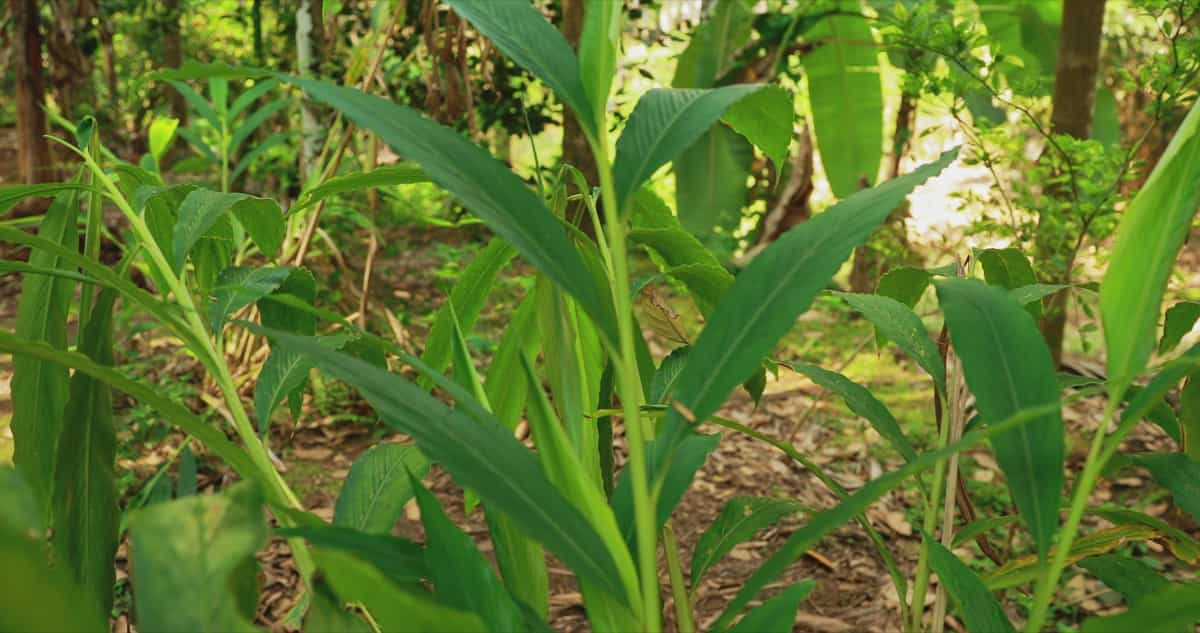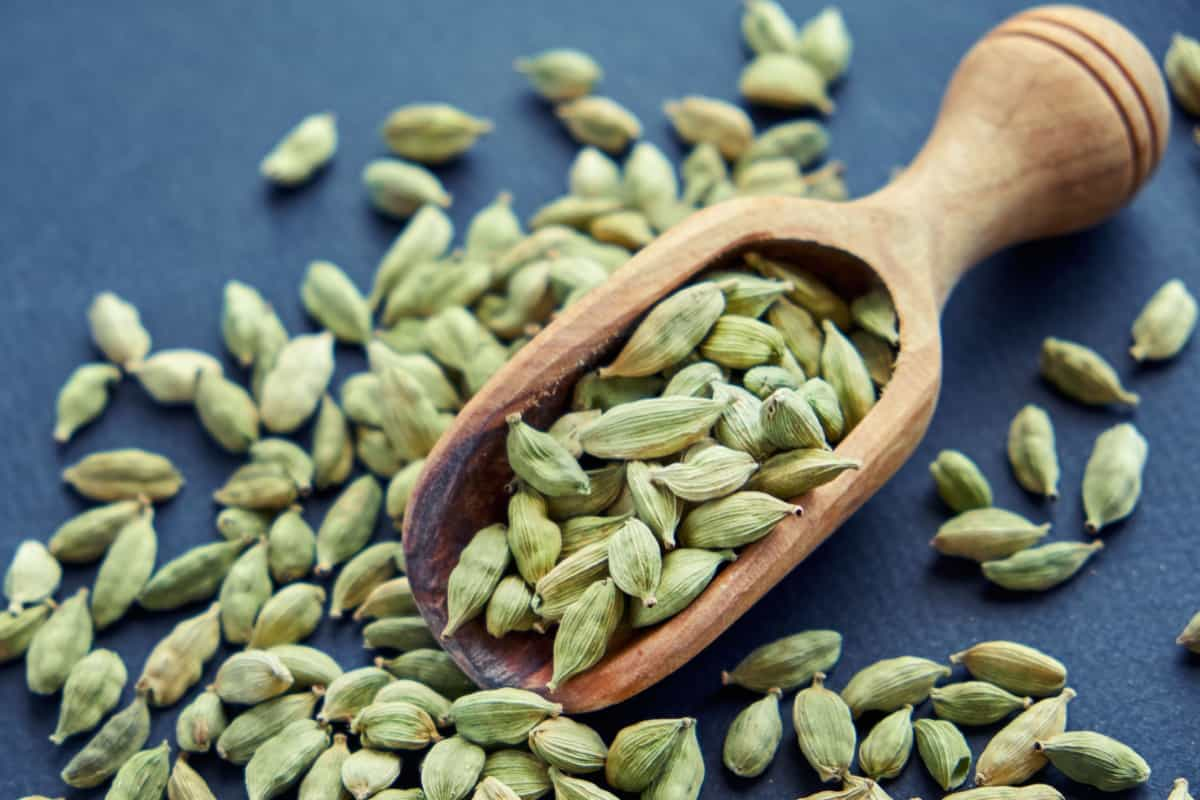Cardamom, often considered the queen of spices, presents a curious case in agriculture due to its specific pollination needs. Whether you’ve asked yourself, “How do you pollinate cardamom?” or wondered, “Is cardamom a pollinated crop?” this article will provide the insights you need.

We’ll delve into the fascinating realm of cardamom pollination, examining the intricate process of plant reproduction that, in the case of cardamom, heavily relies on the activity of the pollinating agent. The method of cardamom pollination can significantly affect the yield and quality of this globally revered spice. We’ll cover various topics, from hand pollination methods to understanding the plant’s reproductive biology, aiming to provide a comprehensive guide to cardamom pollination.
How to Pollinate Cardamom Plants
Understanding the Reproductive Biology of Cardamom and Its Impact on Pollination
Cardamom plants showcase a complex reproductive system that presents intriguing opportunities and challenges regarding pollination. In all flowering plants, pollen is transferred from the male (anther) to the female (stigma) part of the flower. Yet, the plant’s unique structure complicates this seemingly straightforward process.
Unlike some crops, cardamom has an anther and stigma situated far apart, requiring a competent pollinating agent to bridge this gap effectively. This biological peculiarity is a primary reason behind the necessity for specialized pollination techniques in cardamom cultivation, whether natural or manual.
Methods for Hand Pollination of Cardamom Plants
In light of the unique reproductive biology of cardamom, farmers often resort to hand pollination to ensure the successful propagation of these plants. Using various specialized tools and techniques, this method manually transfers pollen from the anther to the stigma.
Hand pollination can be particularly advantageous when natural pollinators are scarce or non-existent. Typically, a small brush or a similarly fine-tipped tool is used to pick up the pollen from the anther and deposit it onto the stigma. The delicate process requires keen attention and a steady hand to prevent damage to the delicate floral structures.
Tools and Equipment Needed for Hand Pollination of Cardamom Plants
Engaging in the task of hand pollination necessitates the availability of certain tools. A small, soft brush is the most commonly used tool for hand pollination of cardamom. This brush, often made of gentle bristles, picks up the pollen grains from the anther and then carefully transfers them to the stigma. In addition to the brush, a magnifying glass can be helpful to observe the pollination process more closely and ensure a successful transfer. Care must be taken to maintain these tools’ cleanliness to prevent contamination and ensure effective pollination.
Natural Pollination Techniques for Cardamom Cultivation
While hand pollination offers a degree of control and certainty, natural pollination techniques are indispensable in cardamom cultivation. Cardamom flowers are primarily pollinated by insects, notably bees and certain flies.
The sweet aroma and attractive colors of cardamom flowers lure these insects, which, in their quest for nectar, facilitate the transfer of pollen. Planting complementary plants that attract these natural pollinators can be a beneficial strategy in cardamom cultivation. Maintaining biodiversity within the plantation can also encourage a healthy population of these pollinators.
In case you missed it: 9 Causes of Dying Cardamom Plant and How to Fix Them?

Importance of Pollination in Cardamom Production
Pollination is a critical factor in cardamom production. It directly influences the number of cardamom pods a plant produces, which, in turn, impacts the overall yield. Inadequate pollination can lead to a significant drop in yield, affecting the farmer’s revenue and the spice’s market availability. Moreover, pollination also affects the quality of the cardamom pods. Properly pollinated flowers produce fuller, healthier pods with more robust flavor profiles. Thus, understanding effective pollination techniques is integral to successful cardamom cultivation.
Best Practices for Ensuring Successful Pollination in Cardamom Plants
Several best practices can help ensure successful pollination in cardamom plants. One important strategy is to maintain a healthy plantation environment. This includes controlling pests, ensuring adequate irrigation, and providing sufficient nutrients to the plants. A healthy plant is more likely to attract pollinators and facilitate successful pollination.
Regularly monitoring the flowers can help detect any issues early and take corrective measures. If hand pollination is employed, it is crucial to train the individuals involved in the process correctly to ensure they handle the flowers carefully and perform the pollination effectively.
Common Challenges and Solutions in Pollinating Cardamom Crops
Despite the best efforts, pollinating cardamom crops can present several challenges. The decline in natural pollinator populations due to habitat destruction and climate change is a significant hurdle. In such cases, encouraging local biodiversity and creating pollinator-friendly habitats can help attract natural pollinators. Regarding hand pollination, the labor-intensive and time-consuming nature of the task is a primary concern. Technological innovations in agricultural tools and techniques can alleviate some of these challenges, making the process more efficient.
Optimal Timing for Pollinating Cardamom Flowers
The timing of pollination plays a crucial role in the success of cardamom cultivation. Cardamom flowers typically open early in the morning and remain receptive to pollination for about a day. Therefore, the optimal time for natural or manual pollination is during the early hours of the day when the flowers have just opened. Missing this narrow window of opportunity can lead to unsuccessful pollination, underscoring the importance of timing in this critical agricultural process.
Enhancing Cardamom Yield Through Effective Pollination Techniques
Effective pollination techniques hold the key to enhancing cardamom yield. Whether it’s the diligent work of bees buzzing from flower to flower or the careful hand of a farmer armed with a soft brush, successful pollination can significantly boost the quantity and quality of the cardamom pods. Therefore, investing in pollination – fostering natural pollinator populations, training workers for manual pollination, or integrating both techniques – can greatly benefit cardamom cultivation, leading to a bountiful harvest of this precious spice.
Observing the Cardamom Flower’s Pollination Response
Close observation of the cardamom flower’s response to pollination can provide valuable insights into the success of the process. Following the act of pollination, whether natural or manual, the flower’s behavior can indicate whether the pollen has effectively reached the stigma and initiated the fertilization process.
Signs of successful pollination may include the flower’s wilting and the ovary’s swelling, signaling the development of the cardamom pod. Regular monitoring and recording of these changes can provide a useful guide to adjust and enhance pollination strategies, thereby optimizing the yield and quality of the cardamom crop.
In case you missed it: How to Grow Cardamom in a Greenhouse: A Step-By-Step Guide for Seed to Harvest

Conclusion
The realm of cardamom pollination is a complex and fascinating, intertwining element of biology, environmental science, and agricultural practice. Understanding the intricacies of this process can unlock the door to increased productivity and success in cardamom cultivation. It becomes clear, then, that the question “What is the pollinating agent in cardamom?” is not merely an interesting query but a critical factor influencing the cultivation of this globally cherished spice.
- Feed Your Flock for Less: Top 10 Tips to Save on Chicken Feed
- Ultimate Guide to Ossabaw Island Hog: Breeding, Raising, Diet, and Care
- Hatching Answers: The Top 10 Reasons Your Chickens Aren’t Laying Eggs
- Eggs and Economics: Breaking Down the Cost of Raising Backyard Chickens
- Defend Your Greens: Proven Methods to Keep Iguanas Out of Your Garden
- Ultimate Guide to Cinnamon Queen Chicken: A Comprehensive Guide for Beginners
- Ultimate Guide to California Tan Chicken: Breeding, Raising, Diet, Egg-Production and Care
- Ultimate Guide to Marsh Daisy Chicken: Breeding, Raising, Diet, and Care
- 10 Types of Chicken Farming Businesses You Can Start for Profits